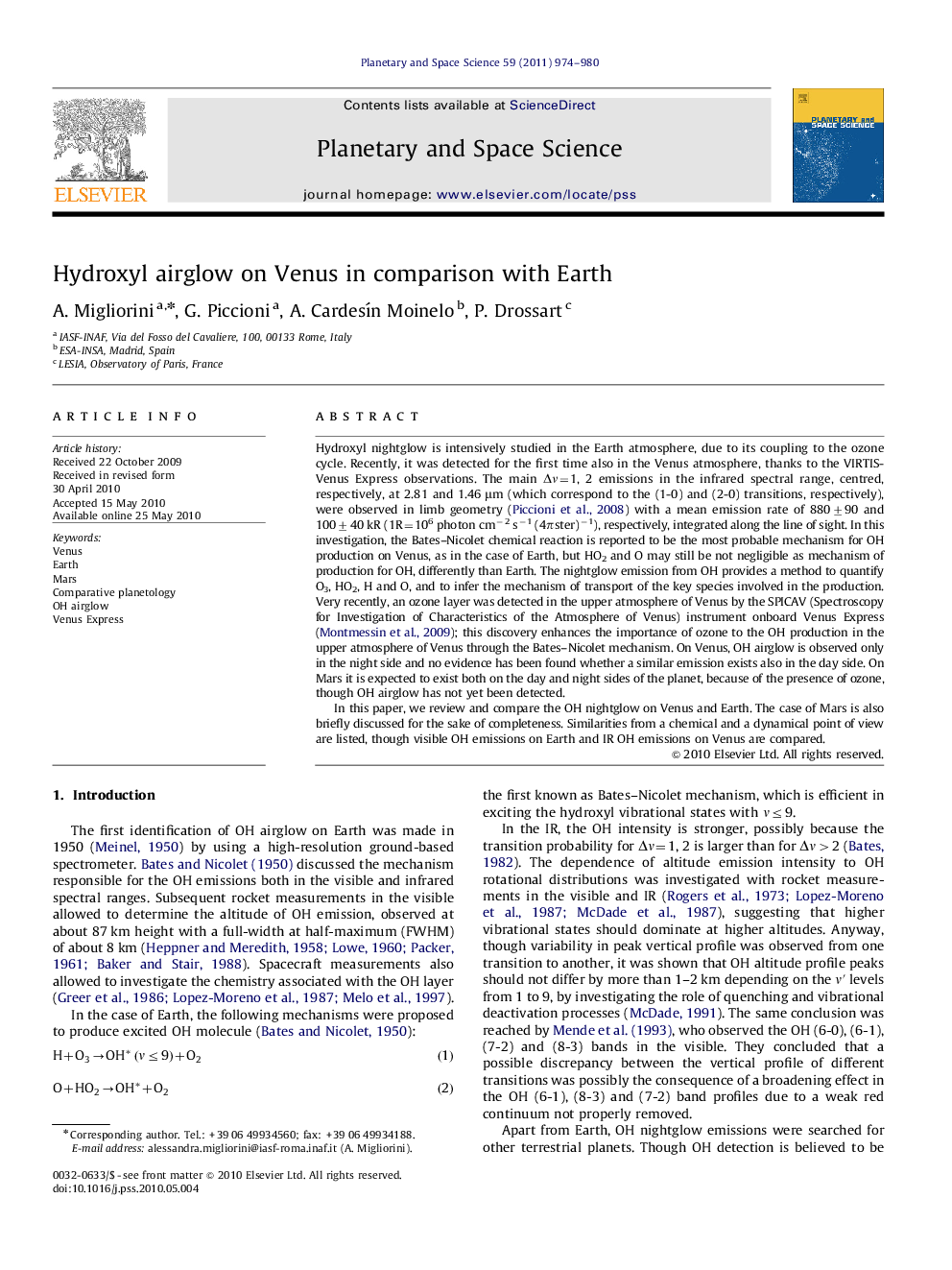| Article ID | Journal | Published Year | Pages | File Type |
|---|---|---|---|---|
| 1781797 | Planetary and Space Science | 2011 | 7 Pages |
Hydroxyl nightglow is intensively studied in the Earth atmosphere, due to its coupling to the ozone cycle. Recently, it was detected for the first time also in the Venus atmosphere, thanks to the VIRTIS-Venus Express observations. The main Δν=1, 2 emissions in the infrared spectral range, centred, respectively, at 2.81 and 1.46 μm (which correspond to the (1-0) and (2-0) transitions, respectively), were observed in limb geometry (Piccioni et al., 2008) with a mean emission rate of 880±90 and 100±40 kR (1R=106 photon cm−2 s−1 (4πster)−1), respectively, integrated along the line of sight. In this investigation, the Bates–Nicolet chemical reaction is reported to be the most probable mechanism for OH production on Venus, as in the case of Earth, but HO2 and O may still be not negligible as mechanism of production for OH, differently than Earth. The nightglow emission from OH provides a method to quantify O3, HO2, H and O, and to infer the mechanism of transport of the key species involved in the production. Very recently, an ozone layer was detected in the upper atmosphere of Venus by the SPICAV (Spectroscopy for Investigation of Characteristics of the Atmosphere of Venus) instrument onboard Venus Express (Montmessin et al., 2009); this discovery enhances the importance of ozone to the OH production in the upper atmosphere of Venus through the Bates–Nicolet mechanism. On Venus, OH airglow is observed only in the night side and no evidence has been found whether a similar emission exists also in the day side. On Mars it is expected to exist both on the day and night sides of the planet, because of the presence of ozone, though OH airglow has not yet been detected.In this paper, we review and compare the OH nightglow on Venus and Earth. The case of Mars is also briefly discussed for the sake of completeness. Similarities from a chemical and a dynamical point of view are listed, though visible OH emissions on Earth and IR OH emissions on Venus are compared.
